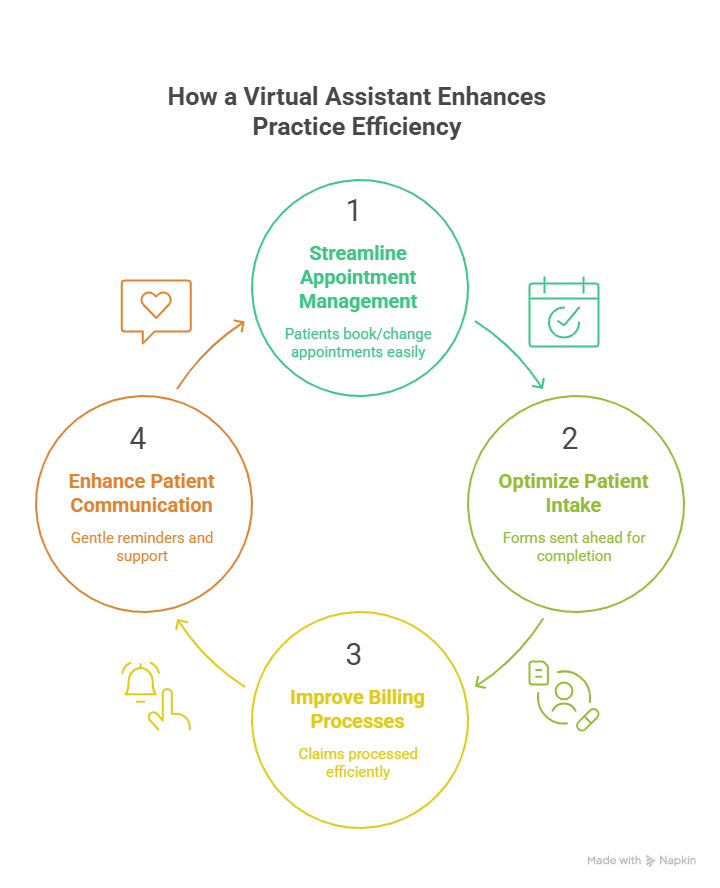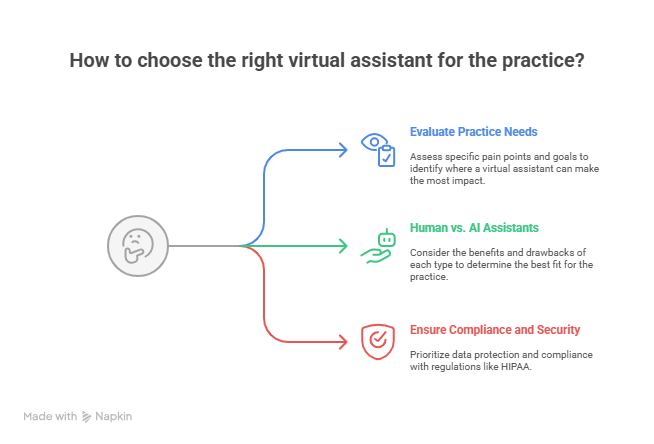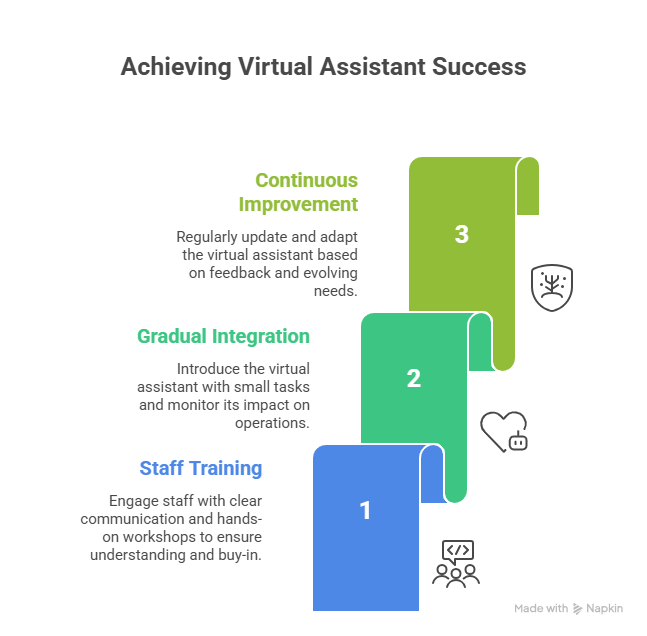How a Physical Therapy Virtual Assistant Can Transform Your Practice
15 Oct 2025 By: Mary Dellosa
Updated

Physical therapy clinics now face more pressure to give great care and manage admin work. Balancing both can cause burnout and lost income. New tech now links clinics with trained remote pros. New technology like Sprypt helps automate scheduling, documentation, and billing lightening the admin load for busy teams. A physical therapy virtual assistant helps reduce workload and boost performance.
This remote expert handles tasks like booking visits, billing, and sharing info with patients. They keep things running without delay. See how hiring a physical therapy virtual assistant can lift your clinic, improve care, and help you compete in today’s fast-changing market.
Understanding the Role of a Physical Therapy Virtual Assistant
What Is a Physical Therapy Virtual Assistant?
A physical therapy virtual assistant (PT VA) is a trained remote worker. They help clinics with both admin and clinical support tasks. Unlike general VAs, PT VAs know the ins and outs of therapy work. They understand clinic flow, patient needs, and health rules.
They work off-site but act like part of your team. Their job is to cut admin work so therapists can focus on care. This matters in a field where quick, personal help improves outcomes. PT VAs boost clinic flow and help patients feel more supported.
Key Functions and Capabilities
Physical therapy virtual assistants typically handle a broad range of tasks, including:
- Appointment Scheduling and Reminders: Managing calendars, booking patient visits, and sending automated reminders to reduce no-shows.
- Patient Intake and Documentation: Collecting medical histories, consent forms, and insurance information digitally before appointments.
- Billing and Insurance Verification: Assisting with claims processing, verifying patient coverage, and following up on outstanding payments.
- Patient Communication: Answering common patient questions, providing educational materials, and facilitating telehealth sessions.
- Data Management and Reporting: Organizing patient records, tracking treatment progress, and generating reports for compliance and quality assurance.
By eliminating these time-consuming tasks, Physical Therapy Virtual Assistants enable practices to run more efficiently and enhance the overall patient experience. They may also help to manage patient engagement via follow-up communications that prompt adherence with care plans.
Such a proactive approach not only aids in monitoring patient change but also contributes towards enhancing therapeutic alliance between the patient and the therapist. And then, with telehealth becoming more common, PT VAs can help make certain virtual appointments go as smoothly as possible, from aiding in technical difficulties to equipping patients with proper resources for their at-home exercises.
The Growing Need for Efficiency in Physical Therapy Practices
Current Challenges Faced by Physical Therapists
Physical therapists do more than care for people. They also juggle paperwork, calls, and running the clinic every day. Admin work eats up hours and pulls them away from what matters most, helping patients feel better.
Rules change, insurance gets tricky, and patients want fast answers. It all adds pressure. It’s no wonder they feel drained. And when that happens, it’s tough to give patients the care they need.
Impact on Patient Outcomes and Practice Growth
When things don’t run smoothly, it takes a toll. Staff feels stressed, and patients start to notice. Missed messages or late appointments can make patients feel forgotten. Some may stop coming back. When care feels rushed or confusing, trust fades and progress slows.
It’s also hard for small clinics to grow when others run faster and smoother. But with simple tools like online booking and telehealth, things feel easier. Patients feel seen, staff feels less stressed, and care becomes more personal.
How a Virtual Assistant Enhances Practice Efficiency

Streamlining Appointment Management
Keeping up with appointments is tiring. The phone rings all day, and your team feels stretched. A virtual assistant makes it easier. Patients can book or change visits anytime, no waiting, no stress. It sends kind reminders that help people show up and feel cared for.
Fewer no-shows means more time for real care and less pressure on your staff. Your front desk gets to breathe and greet patients with calm and care. With better planning, each day feels smoother for everyone.
Optimizing Patient Intake and Documentation
Collecting patient information is key, but it can slow things down. A virtual assistant makes it simple by sending forms ahead of time. Patients can fill them out when it works best for them. That means less waiting at the clinic and more time focused on care, not paperwork.
They also help keep records clean and updated, so everything’s in place and nothing gets missed. If something’s left out, they gently remind the patient before their visit. It keeps things smooth, helps patients feel more involved, and lets therapists focus on what matters most, care.
Improving Billing and Insurance Processes
Billing and insurance issues can slow everything down and stress your team. A physical therapy virtual assistant helps by checking coverage, sending claims, and following up on missed payments.
This means fewer errors, faster payments, and less time spent fixing problems. It also means more money coming in and less worry for you. They can track payment trends and give simple reports, so you know what’s working. With their help, billing feels easier and your clinic runs more smoothly.
Enhancing Patient Communication and Engagement
People want to feel cared for. A simple, kind message can remind them they’re not alone. Virtual assistants help by being that gentle support. They answer questions, share easy tips, and make care feel simple and calm.
When someone feels seen and supported, they’re more likely to stick with their care and start to heal. Virtual Assistants also check in after visits with a warm note, just asking how things are going. Those small, caring moments build trust and bring people back, because they know you truly care.
Choosing the Right Physical Therapy Virtual Assistant for Your Practice

Evaluating Your Practice Needs
Before selecting a virtual assistant, it’s important to assess your practice’s specific pain points and goals. Consider factors such as:
- Volume of administrative tasks
- Patient demographics and communication preferences
- Integration needs with existing software
- Budget and scalability requirements
You can do a workflow analysis to figure out what is holding up your operation and where it may be inefficient. Also let the team members help you pinpoint tasks that take too much time. You will not just be able to recognize where a virtual assistant can make the most impact, but also where one cannot. With a clear picture of how your practice works, then and only then can you find a virtual assistant who fits the needs of your current setting and adapts well over time.
Human vs. AI-Powered Virtual Assistants
Human virtual assistants offer personalized service and can handle complex patient interactions, but they come with higher costs and scheduling constraints. AI-powered assistants provide 24/7 availability, instant responses, and cost efficiency but may lack nuanced understanding in certain scenarios.
Using both AI and real people can make your clinic work better. AI handles the small stuff like booking, reminders, and quick answers. That gives your team more time to focus on patients and build real connections.
Patients get fast help and still feel cared for by real people when it matters. It makes things easier for everyone and helps your clinic give better care. As tech improves, this team-up of AI and people will only get stronger.
Ensuring Compliance and Security
Patient info is private and keeping it safe really matters. Any virtual assistant you choose should follow HIPAA and protect that data with care. They should use strong tools to lock things down, like encryption and secure storage.
Their team should be trained to handle info safely and follow clear rules. It also helps to check their systems often, just to be sure everything’s working right. If something goes wrong, there should be an easy way to report it. When patients know their info is safe, they trust you more and that trust keeps them coming back.
Implementing a Virtual Assistant: Best Practices for Success

Staff Training and Buy-In
Bringing in a physical therapy virtual assistant starts with clear, honest talk with your team. Make sure everyone knows how it works and how it can help not replace them.
Give training and space to ask questions or share worries. Everyone should feel heard. Try hands-on workshops so your team can see how the assistant works in real time. This helps ease fears and shows how it can make their day easier. Share real stories from other clinics who’ve seen success using a virtual assistant. Let your team share ideas too, you might find new, better ways to use it together.
Gradual Integration and Monitoring
Start simple. Let the physical therapy virtual assistant take on a few small tasks at first. Give your team time to get used to it before adding more. Let them ease in. Watch how things go. Look at no-shows, billing, and how patients respond.
You can also run a small test with just a few team members. They can try it out, work out the kinks, and help others later. This makes change feel less scary and gives your team a chance to lead the way. Keep talking with your staff. Ask how it’s going and really listen. With steady feedback and small tweaks, you’ll find what works best for your team and your patients.
Continuous Improvement and Updates
Technology changes fast, so your virtual assistant should grow with you. As your team and patients’ needs change, make small updates to keep things working well. Ask your staff and patients what helps and what doesn’t. Their feedback makes it better and shows you’re listening.
When people feel heard, they care more and stay engaged. Keep learning too. New tools come out all the time that can make life easier. Little changes can make a big difference. When your assistant grows with you, everyone wins.
The Future of Physical Therapy Practices with Virtual Assistants
Healthcare is changing, and virtual assistants are becoming a big help. New tools will let them give even more personal support. Clinics that start now will save time, lower stress, and make patients feel more cared for. Best of all, physical therapy virtual assistants free you up to focus on what matters most, helping people heal.
Trending Now
Over half of physical therapists in the study reported feeling burned out due to work-related stress. Both personal and organizational factors played a role. The study found that burnout not only affects therapists’ well-being but also impacts patient care and clinic performance.
Conclusion
Running a clinic is hard. You’re helping people while juggling calls, forms, and a full schedule. A physical therapy virtual assistant can take some of that load off your team. They handle the little things, so you have more time for your patients.
Your day feels calmer. Your team feels less stressed. Your care stays personal. It’s not just about saving time, it’s about making space to do what you love. Adding a physical therapy virtual assistant helps you build a clinic that feels good for everyone.
HelpSquad Health’s virtual assistants take care of the daily tasks that slow you down, like answering messages, booking appointments, and handling follow-ups. With 24/7 support, they help reduce no-shows, improve patient communication, and make your day feel a little less rushed. Whether it’s scheduling, billing help, or quick replies to patient questions, HelpSquad Health is there to support your practice every step of the way.


